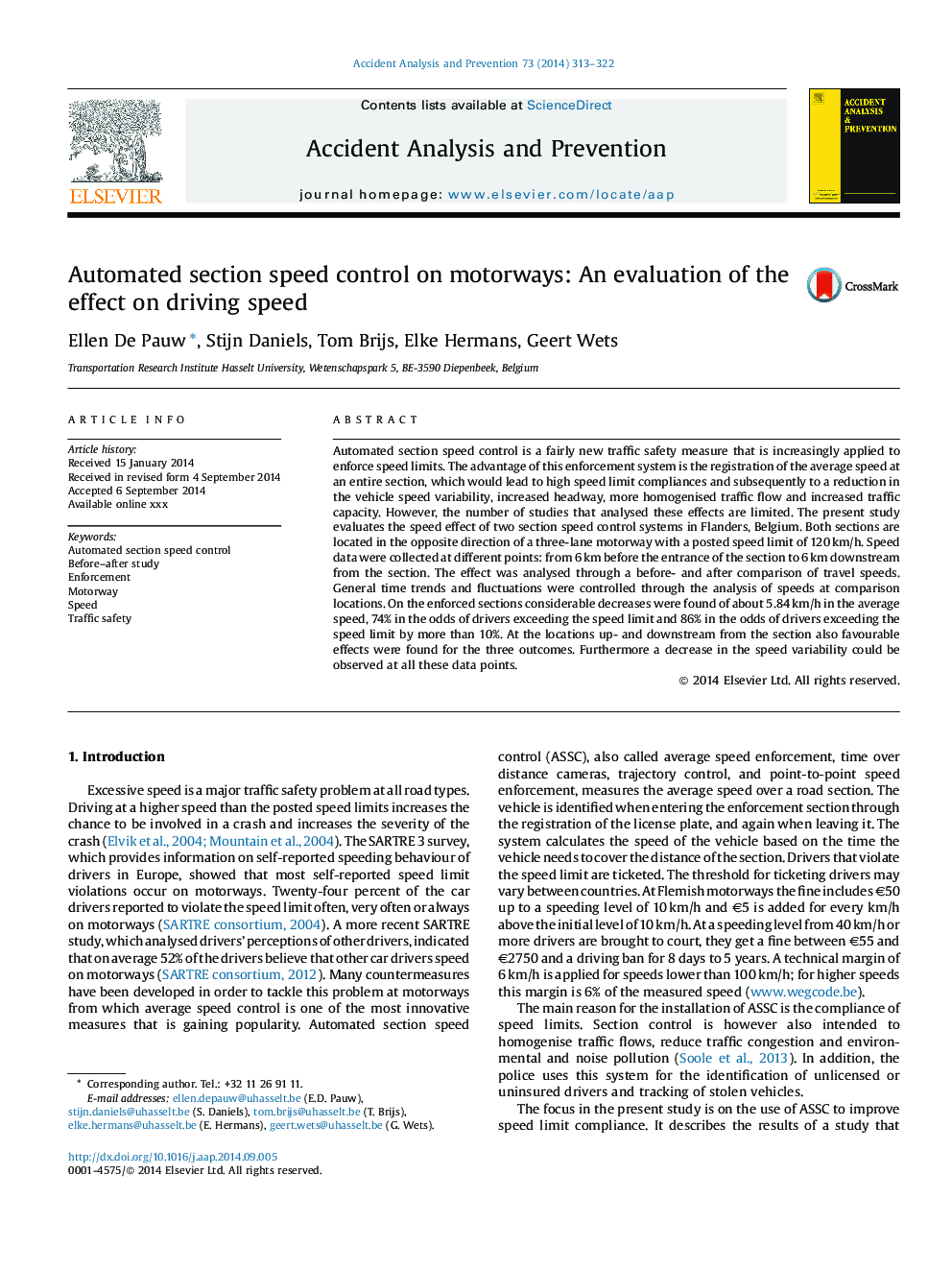| Article ID | Journal | Published Year | Pages | File Type |
|---|---|---|---|---|
| 6965901 | Accident Analysis & Prevention | 2014 | 10 Pages |
Abstract
Automated section speed control is a fairly new traffic safety measure that is increasingly applied to enforce speed limits. The advantage of this enforcement system is the registration of the average speed at an entire section, which would lead to high speed limit compliances and subsequently to a reduction in the vehicle speed variability, increased headway, more homogenised traffic flow and increased traffic capacity. However, the number of studies that analysed these effects are limited. The present study evaluates the speed effect of two section speed control systems in Flanders, Belgium. Both sections are located in the opposite direction of a three-lane motorway with a posted speed limit of 120Â km/h. Speed data were collected at different points: from 6Â km before the entrance of the section to 6Â km downstream from the section. The effect was analysed through a before- and after comparison of travel speeds. General time trends and fluctuations were controlled through the analysis of speeds at comparison locations. On the enforced sections considerable decreases were found of about 5.84Â km/h in the average speed, 74% in the odds of drivers exceeding the speed limit and 86% in the odds of drivers exceeding the speed limit by more than 10%. At the locations up- and downstream from the section also favourable effects were found for the three outcomes. Furthermore a decrease in the speed variability could be observed at all these data points.
Related Topics
Physical Sciences and Engineering
Chemical Engineering
Chemical Health and Safety
Authors
Ellen De Pauw, Stijn Daniels, Tom Brijs, Elke Hermans, Geert Wets,
